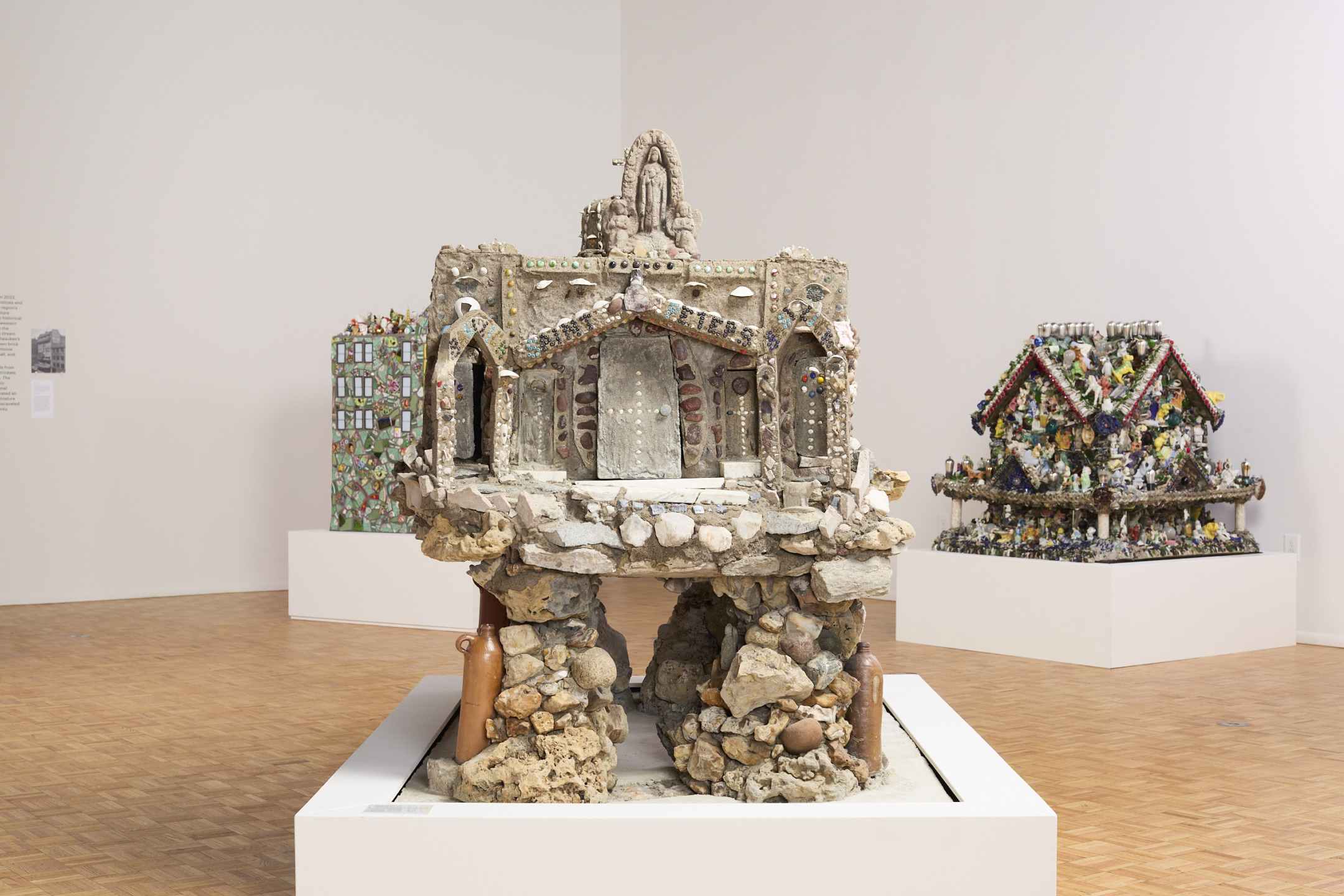Midwest Grottos Were DIY Masterpieces Hiding in Plain Sight
A surprising new exhibition at the John Michael Kohler Arts Center reframes the vernacular shrines as hybrid works of faith, craft, and cultural memory

In 1893, Paul Dobberstein immigrated from Germany to Milwaukee and began studying for the priesthood at St. Francis Seminary, where he contracted pneumonia. To express his gratitude for surviving it, he vowed to build a shrine to the Blessed Virgin. He carried rocks and boulders to his parish, and began construction in 1912 on what would become The Grotto of the Redemption. His was not the first grotto: the vernacular stretched back to Europe’s Middle Ages, where shepherds crafted ersatz altars in their caves. Neither would he be the last unmarried, male artist to make art out of battling pneumonia. But Dobberstein’s grotto would eventually span an entire city block, telling biblical stories in what might be the world’s largest collection of semiprecious stones and minerals.

His vernacular was infectious. In 1930, Father Mathias Wernerus completed his Dickeyville Grotto, a tribute to patriotism and faith. Sixteen years later, Madeline Buol (one of the few known female grotto makers) would venture into the yard around her house and begin sculpting a grotto of her own. “A Beautiful Experience: The Midwest Grotto Tradition” honors her by centering her 13-piece work of concrete, shells, toys, and ephemera among smaller works by Dobberstein and Wernerus. Co-curated by John Michael Kohler Arts Center collections curator Laura Bickford and assistant curator Chava Krivchenia, it argues we should take seriously what others dismiss as kitsch. Each chunk of concrete, for example, is a kind of political and ecological geography, displaying to minerals and pollutants local makers dug up. “They speak to geologic time,” Bickford says. “But they also map the industry of the area, the dinnerware people collected at the time, the different tchotchkes. With their cultural motifs, each one is a timeline from the prehistoric to the 1950s.”


The exhibition carries that timeline into today by inviting a pair of artists to respond to Buol’s work. Twentieth-century grotto creators made their work to express their Catholic faith, but also to make it legible to their neighbors. “The grottos became a way of saying, we’re Catholic, just like you,” Bickford says, a prayer that German Catholics might successfully integrate into America. In the show, contemporary artist Stephanie H. Shih imagines a grotto made by the Chinese diasporic community of that same period. “She based it on a building called the Toy Building in downtown Milwaukee, that was owned by a Chinese immigrant and housed a restaurant, dance floor, and a bunch of import-export and other businesses,” she says. The replica is cloaked in playthings Shih crowdsourced from around the country, including fragments of Chinatown ceramics, toys, and relics from a 20th-century Chinese fishing village in Marin County—and also Palestinian ceramics, holy water, an evil eye. Letters from people who sent her the objects can be read in a book nearby.

The artist E. Saffronia Downing found resonance in the human-scale rosaries Buol crafted—and the material she used. “She began thinking about these beads as seed,” says Krivchenia, and of the earth used to make them as a repository. “This land could be a bead, a seed, a tile, it could go back into the earth, it could also be a mountain,” she says. “They have different lives within a longer history of geologic history.” Downing’s installations, then, might be said to contextualize the grotto as a material-forward memoir, while telling some stories themselves.


By the end of the 20th century, grottos were all the rage, cropping up around the Midwest anywhere someone had access to cheap concrete, some conversation pieces, and a vision they couldn’t shake. In the 1960s and ‘70s, they were tourist traps; communities later found them eyesores. “A Beautiful Experience” reincarnates the vernacular, proving the form explores material, architecture, and faith, along the way mashing up expert craftsmanship and punk DIY. At their best—even at their most amateur—grottos embody a longing to belong and to stand out in a crowd. What could be more American, or more timely, than that?
“A Beautiful Experience: The Midwest Grotto Tradition” is on view at the John Michael Kohler Arts Center in Sheboygan, Wisconsin, through May 2026.